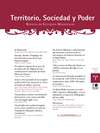Resumen
Resumen: El principal objeto de este trabajo es constituir una aproximación a la historia de un microespacio enclavado en el sector meridional del concejo de Llanera (Asturias) durante el Medievo. Dicho lugar se sitúa en el territorio perteneciente a dos demarcaciones parroquiales, la de Rondiella y la de San Cucao. Durante el siglo XI la documentación nos refiere la existencia de un espacio, Seneria Alkemani, que en su origen tiene un possessor de nombre musulmán. Gracias a otro testimonio documental, una donación que la reina Urraca realiza a San Salvador, sabemos que dicha zona se encontraba en manos regias y que pasa a incorporarse al amplio dominio territorial del cabildo ovetense. El territorio de Sierralcamán se conserva durante el Medievo y se configura como una ería en la que distintas aldeas reparten sus propiedades y en la que comienza a perfilarse un proceso de adquisición de tierras por parte de un miembro de la emergente burguesía artesanal ovetense, el cerrajero alfonso Yannes. Entre los siglos XIII y XIV asistimos al enriquecimiento de este personaje que, aprovechando la crisis acaecida durante la segunda mitad de la decimotercera centuria, actúa también como prestamista, obteniendo de este modo las distintas propiedades de los campesinos empobrecidos que no pueden hacer frente a sus deudas.
Palabras clave: microespacio, possessor, ería, openfield, burguesía artesanal, crisis bajomedieval.
Abstract: The main aim of this work is to provide an approach to the History of a microspace located in the southern sector of the council of Llanera (Asturias) during the Middle Ages. The analysis of the documents as well as the information collected during the field work has shown the existence of an ancient space, Seneria Alkemani, which had its origins in a possessor with a Muslim name. There is no evidence of neither the status of this personage named Alkama nor the date on which the place name in the landscape should have been fixed. Iit could have happened in a broad temporary lapse between the eighth and eleventh centuries. Behind the place name could be a varied reality. Because of the presence in the eighth century of a Muslim governor in Gijón, a city of great importance during antiquity, we consider that these places, which had played a crucial role in territorial articulation during the preceding age, might have been reused by the new Muslim power at the time of its establishment. The environment in which lies Sierralcamán was widely romanized during the ancient times, so it would not be strange a possible settlement in its surrounding area, although we can’t specify its typology. But the Muslim establishment in the Asturian region lasted about five years, a brief span too meagre for setting a place name with such characteristics. With regard to the possible status of this possessor we don’t know anything. But we think that it is implausible the possibility that an individual from servile status count of a possession with a remarkable extent, according to the genitive construction in which appears the place name. Nor can we certify the existence of a settlement with Muslim population in Llanera in an unknown moment, because we have no data that endorse it. Nowadays is fully accepted by medieval historiography the presence of arabic or arabized names in the northwest Iberian Peninsula, and in this sense Asturias is not an exception. Following the most plausible theories, apart from the wellknown migration of christians arabized from al-Andalus, the name behind Seneria Alkemani could be a character of Berber origin, of the first time, or a Hispanic-Christian possessor who takes a Muslim name for reasons of prestige, in relation to the crucial political weight that has the Caliphate of Córdoba, especially in the tenth century, identifying Islam with the great power of the time. The only thing we can confidently assert is that in the origin of the subsequent Sierralcamán was a possessor with a Muslim name who, for data handled, must have been important enough to leave his name set in the space. The small territory of Sierralcamán is in royal hands in the twelfth century and in that same century it’s donated to Oviedo’s cathedral by Queen Urraca the Asturian. This space will survive during the Middle Ages subsumed into two different parish boundaries, san cucao and rondiella, configuring a complex agrarian structure, an ería or openfield, where different inhabitants of the near villages of San Cucao, Rondiella, Severies, Baúro and Guyame will have several properties, which is a special case in terms of morphology and size of such units. Due to the vastness of this space, the documents begin to specify different areas in the interior of sierracalmán in order to locate accurately the parcels subject of buying and selling. Based on the documentary evidence we establish the existence of twelve different locations within this agrarian space, some of wich we were able to find through the microtoponimy conserved. In the last decades of 13th century and the first decade of 14th century a representative of the craft bourgeoisie in Oviedo, a locksmith named Alfonso Yannes, begins an acquisition process of properties, both in this ería as in surrounding areas, all of them located in the parishes of St. Cucao and Rondiella. Based on the analysis of the microtoponimy and collation with medieval documents were found three other units which were put into agricultural use after Sierracalmán, because they are located in marginal areas of agrarian low-quality: Carbayal, Eiría / So Uárgano and La Vega. On the other hand we also notice this locksmith acting as a lender at different times, in many cases acquiring the properties of impoverished peasants who could not cope with the debts incurred with him. The proceedings of this character could be interpreted as a symptom of the general crisis of the late Middle Ages, whose smoother profiles can be perceived in the fourteenth century.
Keywords: microspace, possessor, ería, openfield, craft bourgeiosie, crisis of the Late Middle Ages.

